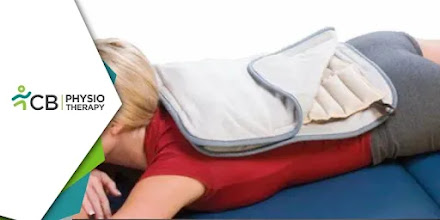Poor posture has become a silent epidemic in today’s fast-paced world, where sedentary lifestyles and prolonged screen time dominate. While it may seem minor, poor posture can lead to a cascade of health issues over time, affecting both physical and mental well-being. Physiotherapy posture assessment and correction are pivotal in addressing this growing problem. Here’s why focusing on posture is essential and how physiotherapy can help prevent various medical conditions.
Understanding Posture and Its Impact
Posture refers to the alignment and positioning of the body’s joints and muscles while sitting, standing, or lying down. Good posture ensures the body functions optimally, maintaining balance and minimizing strain on muscles, ligaments, and joints. Conversely, poor posture disrupts this balance, leading to overcompensation, muscle imbalances, and joint stress.
The consequences of poor posture are far-reaching, including:
1: Chronic pain in the neck, back, and shoulders
2. Reduced flexibility and mobility
3. Decreased lung capacity
4. Poor circulation
5. Increased risk of injury
6. Mental health issues like fatigue and decreased self-confidence
Why Physiotherapy Posture Assessment Matters
Physiotherapists are experts in the musculoskeletal system and are uniquely equipped to assess posture and identify its deviations. A posture assessment typically involves:
1. Analyzing alignment and movement patterns
2. Identifying muscle imbalances and weaknesses
3. Observing joint mobility and stability
By identifying the root cause of postural issues, physiotherapists can create a customized intervention plan to restore balance and improve overall functionality.
Medical Conditions Prevented by Posture Correction
Addressing posture through physiotherapy doesn’t just improve aesthetics, it can prevent or manage several medical conditions:
1: Musculoskeletal Disorders:
Poor posture places undue stress on muscles and joints, leading to conditions such as:
a. Chronic Back Pain: Incorrect posture strains spinal structures, causing pain and stiffness.
b. Neck Pain and Cervical Issues: Forward head posture and slouching are common culprits.
c. Shoulder Impingement: Rounded shoulders can lead to restricted shoulder joint movement and pain.
d. Degenerative Conditions: Improper alignment accelerates wear and tear on joints, contributing to:
Osteoarthritis: Uneven joint loading increases the risk of cartilage degeneration.
Spinal Disc Problems: Poor posture can lead to herniated discs and sciatica.
2: Respiratory Issues:
Slouching reduces lung capacity and compromises breathing efficiency. Proper posture improves respiratory function, particularly for individuals with asthma or other chronic respiratory conditions.
3. Digestive Problems:
Compressed abdominal organs due to poor posture can lead to issues such as acid reflux, constipation, and reduced digestive efficiency.
4. Circulatory Concerns:
Postural misalignment can restrict blood flow, leading to swelling, varicose veins, and increased risk of deep vein thrombosis (DVT).
5. Mental Health Challenges:
Poor posture has been linked to decreased energy levels, negative self-perception, and even depression. Correcting posture can boost confidence and improve overall mood.
Role of Physiotherapy in Posture Correction Physiotherapy goes beyond surface-level fixes by addressing the underlying causes of poor posture. Key components of physiotherapy intervention include:
1: Comprehensive Assessment:
Through advanced techniques, physiotherapists analyze postural alignment, movement patterns, and muscle strength to determine specific deviations.
2. Exercise Prescription:
Targeted exercises are essential to strengthen weak muscles, stretch tight areas, and restore balance. Common exercises include core stabilization, scapular retraction, and hip mobility drills.
3. Manual Therapy:
Hands-on techniques such as joint mobilizations, soft tissue massage, and myofascial release help alleviate tension and improve mobility.
4. Ergonomic Advice:
Physiotherapists guide individuals in optimizing their workstations, sleeping positions, and daily habits to maintain good posture throughout the day.
5. Education and Awareness:
Empowering individuals to recognize and correct poor posture in real time is crucial for long-term success. Physiotherapists provide cues and strategies to promote awareness and consistency.
Real-World Benefits of Posture Correction The impact of posture correction through physiotherapy extends beyond physical health. Some notable benefits include:
a. Enhanced athletic performance due to improved alignment and muscle activation
b. Reduced fatigue from efficient energy use
c. Better focus and productivity at work
d. Prevention of injuries, especially in high-risk populations like athletes and older adults
e. Improved quality of life and independence in daily activities
Physiotherapy posture assessment and correction are not just about standing tall; they are about building a foundation for lifelong health. By addressing postural issues early, physiotherapists can prevent a host of medical conditions, enhance physical function, and improve overall well-being. In a world where technology and sedentary habits challenge our natural alignment, prioritizing posture is more important than ever. With the guidance of a skilled physiotherapist, achieving and maintaining optimal posture is within everyone’s reach-a small investment with significant returns for your health and vitality.





